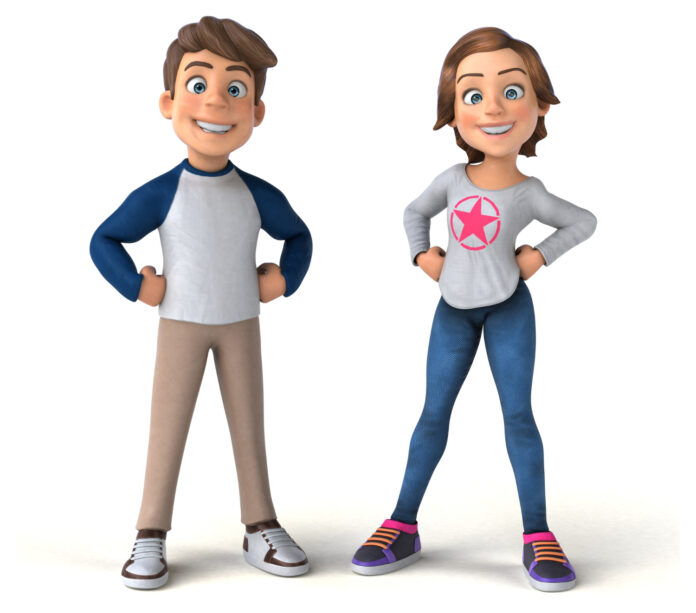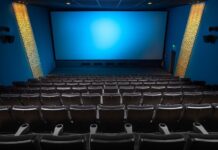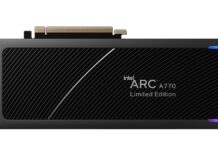Animated characters have been a source of attraction for many people, regardless of their age or gender. From Disney princesses to anime characters, viewers have been drawn to their unique personalities, storylines, and, of course, their physical appearance. But why are animated characters so attractive?
One reason may be that animated characters are often depicted as idealized versions of humans. They have exaggerated features, such as large eyes, small noses, and perfect skin, that are designed to be visually appealing. This is especially true in anime, where characters are often portrayed with bright hair colors and striking outfits that make them stand out. These exaggerated features can make animated characters more visually interesting and appealing than real-life humans.
Another reason for the attraction to animated characters may be the emotional connection that viewers feel with them. Animated characters often have relatable personalities and experiences, which can make them feel more real and human-like. Viewers may also feel a sense of nostalgia or comfort when watching animated characters, as they may remind them of their childhood or happy memories. This emotional connection can make viewers feel more invested in the characters and their stories, which can increase their attraction to them.
The Science of Attraction
When it comes to animated characters, there are a few key factors that can make them attractive to viewers. These factors are rooted in the science of attraction, which has been studied extensively by psychologists and researchers.
The Role of Familiarity
One reason that animated characters can be attractive is that they often embody familiar traits and characteristics. For example, many cartoon characters have exaggerated features that are reminiscent of real-life people or animals. This familiarity can make them more appealing to viewers, who may feel a sense of connection to the character.
The Power of Exaggeration
Another factor that can make animated characters attractive is the power of exaggeration. Cartoon characters often have larger-than-life personalities, with bold gestures, exaggerated movements, and over-the-top expressions. This can make them more engaging and captivating to watch, drawing the viewer in and holding their attention.
The Impact of Anthropomorphism
Finally, the impact of anthropomorphism cannot be overlooked when it comes to the attraction of animated characters. Anthropomorphism is the attribution of human traits, emotions, and behaviors to non-human entities, such as animals or objects. When applied to animated characters, this can make them more relatable and endearing to viewers, who may see themselves reflected in the character’s experiences and emotions.
Overall, the science of attraction provides some insight into why animated characters can be so appealing to viewers. By embodying familiar traits, exaggerating their personalities, and using anthropomorphism, animators are able to create characters that capture the hearts and imaginations of audiences around the world.
The Artistic Perspective
When it comes to animated characters, there’s no denying that they have a certain allure that draws viewers in. But what is it about these characters that make them so attractive? From an artistic perspective, there are a few key elements that contribute to their appeal.
Colour Psychology
One of the most important factors in creating an attractive animated character is the use of colour. Colour psychology plays a big role in how we perceive and respond to different hues. For example, warm colours like red, orange, and yellow are often associated with energy, passion, and excitement. Cooler colours like blue, green, and purple, on the other hand, tend to evoke feelings of calm, serenity, and relaxation.
In animated characters, the use of colour can be used to emphasize certain traits or emotions. For example, a character with fiery red hair might be seen as passionate and energetic, while a character with cool blue eyes might be seen as calm and collected. By using colour to convey these traits, animators can create characters that are instantly recognizable and appealing to viewers.
The Magic of Movement
Another key element in creating attractive animated characters is movement. The way a character moves can convey a lot of information about their personality, emotions, and intentions. A character who moves with grace and fluidity might be seen as elegant and refined, while a character who moves with jerky, erratic motions might be seen as nervous or anxious.
In addition to conveying emotions and personality traits, movement can also be used to create a sense of magic and wonder. For example, a character who moves with a certain otherworldly grace might be seen as mystical or supernatural. By using movement to create these fantastical elements, animators can transport viewers to new and exciting worlds.
Overall, there are many elements that contribute to the attractiveness of animated characters. From the use of colour psychology to the magic of movement, animators have a wide range of tools at their disposal to create characters that are both visually appealing and emotionally engaging.
The Role of Nostalgia
Nostalgia plays a significant role in why animated characters are so attractive to people. Animated characters often evoke a sense of nostalgia, reminding people of cherished memories from their childhood or earlier stages of their lives. This feeling of nostalgia can be powerful and can create a strong emotional connection with the character.
One reason for this connection is that people often associate animated characters with their childhood. As children, people are often exposed to animated characters through movies, TV shows, and other media. These characters become a part of their childhood memories, and as they grow older, they continue to hold a special place in their hearts.
In addition to childhood memories, nostalgia can also be triggered by the animation style itself. Many animated shows and movies use a style that is reminiscent of older cartoons, which can evoke feelings of nostalgia for an earlier time. For example, shows like “Looney Tunes” and “Tom and Jerry” have been around for decades, and their animation styles have remained relatively consistent over the years. This consistency can create a sense of familiarity and nostalgia for viewers.
Furthermore, nostalgia can create a sense of comfort and safety. When people are feeling stressed or anxious, they may turn to things that remind them of happier times. Animated characters can provide this sense of comfort, as they are often associated with positive memories and emotions.
Overall, nostalgia is a powerful force that can make animated characters incredibly attractive to people. It creates a strong emotional connection that can last a lifetime and can bring people back to a simpler time in their lives.
The Influence of Culture
Animated characters have been a part of popular culture for decades. They are loved by children and adults alike for their unique personalities, quirky mannerisms, and relatable stories. However, what makes animated characters attractive to people from different cultures?
Culture plays a significant role in shaping our perception of animated characters. For example, in Japanese culture, anime characters are often portrayed with large eyes, small noses, and small mouths. This is because these features are considered cute and innocent in Japan, and they evoke a sense of childlike wonder and curiosity. Similarly, in Western culture, animated characters are often depicted with exaggerated features such as bulging muscles, hourglass figures, or chiseled jawlines, which are considered attractive and desirable.
Moreover, culture also influences the type of stories that are told through animation. For instance, anime often explores themes of honor, duty, and sacrifice, which are deeply ingrained in Japanese culture. On the other hand, Western animation tends to focus on individualism, freedom, and self-expression, which are values that are highly prized in Western societies.
Another way in which culture influences the perception of animated characters is through the use of cultural references and humor. Animated shows often incorporate jokes and references that are specific to a particular culture or region. For example, The Simpsons is known for its satirical take on American culture, while Dragon Ball Z is steeped in Japanese mythology and folklore. These cultural references and humor help to make the characters and stories more relatable and engaging to audiences from different cultures.
In conclusion, culture plays a significant role in shaping our perception of animated characters. It influences the way they look, the stories they tell, and the humor they use. By understanding the influence of culture on animated characters, we can gain a deeper appreciation for the art form and its ability to connect people from different cultures and backgrounds.
The Impact of Media and Marketing
Animated characters have become an integral part of media and marketing. They are used to promote various products and services, and they have proven to be highly effective in capturing the attention of audiences. The impact of animated characters in media and marketing can be seen in various ways.
Firstly, animated characters are used to create brand awareness. They help to differentiate a brand from its competitors and make it more memorable. By using animated characters, companies can create a unique identity for their brand that is easily recognizable and relatable to their target audience. This increases brand recall and helps to build brand loyalty.
Secondly, animated characters are used to simplify complex messaging. They can help to convey information in a way that is easy to understand and remember. This is particularly useful when promoting products or services that are technical or difficult to explain. By using animated characters, companies can make their messaging more accessible and engaging to their audience.
Thirdly, animated characters are used to create an emotional connection with consumers. They can evoke feelings of joy, nostalgia, and empathy, which can help to build trust and loyalty. This emotional connection can be particularly effective when promoting products or services that are associated with positive emotions, such as food, toys, or entertainment.
Finally, animated characters are used to appeal to younger audiences. Children are particularly drawn to animated characters, and they can have a significant influence on their purchasing decisions. By using animated characters in their marketing, companies can tap into this younger demographic and build brand loyalty from an early age.
In conclusion, the impact of animated characters in media and marketing is significant. They are used to create brand awareness, simplify complex messaging, create emotional connections with consumers, and appeal to younger audiences. By leveraging the power of animated characters, companies can create more effective marketing campaigns that resonate with their target audience.
Conclusion
In summary, animated characters are attractive for a variety of reasons. They can reflect human experiences and emotions, and their exaggerated features and movements can elicit strong emotional responses from viewers. Additionally, the use of bright colors and unique designs can make them visually appealing and memorable.
Furthermore, studies have shown that physical attractiveness plays a role in how animated characters are perceived and received by audiences. Characters that are depicted as more attractive are often given more screen time and shown engaging in a wider range of activities.
Overall, the appeal of animated characters is multifaceted and complex. From their ability to evoke strong emotions to their visually striking designs, they have captured the hearts and imaginations of audiences around the world. So, the next time you find yourself drawn to an animated character, remember that there is more to their appeal than meets the eye.







